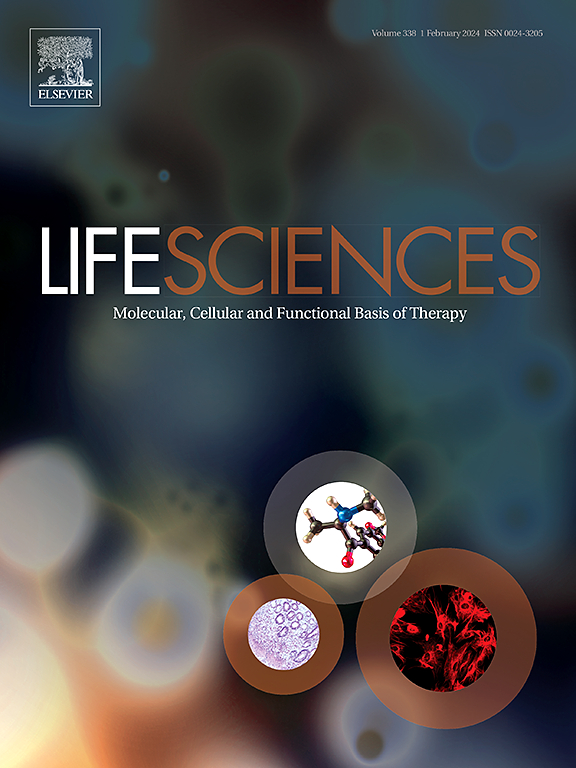The effect of modulation Piezo2 by IGF-1 on tactile hypersensitivity in BTBR model mice
IF 5.2
2区 医学
Q1 MEDICINE, RESEARCH & EXPERIMENTAL
引用次数: 0
Abstract
Aims
Autism spectrum disorder (ASD) is classified as a neurodevelopmental disorder. Individuals with ASD exhibit a higher incidence of tactile hypersensitivity. However, the underlying mechanisms remain unclear. The dorsal root ganglion (DRG) plays a crucial role in influencing tactile processing. This study aims to integrate RNA sequencing (RNA-seq) and molecular biology experiments to identify key molecules involved in tactile hypersensitivity in ASD, further investigate related mechanisms, and develop effective intervention strategy.
Main methods
Using BTBR as the ASD model mouse and wild-type C57BL/6J as the control mouse, the differences in tactile sensitivity between them was compared. DRG were collected for RNA-seq analysis. Immunofluorescence and Enzyme-linked immunosorbent assay (ELISA) techniques were employed to validate the identified key molecules. And combined western blot to investigate the associated regulatory pathways.
Key findings
BTBR mice exhibit tactile hypersensitivity, which are associated with the upregulation of IGF-1 in the DRG. IGF-1 regulates the expression of Piezo2 ion channels. Inhibition of the IGF-1/Piezo2 pathway can significantly alleviate tactile hypersensitivity and social deficits in BTBR mice. Additionally, gentle touch intervention has been shown to reduce the overexpression of IGF-1/Piezo2 in the DRG, thereby ameliorating ASD symptoms.
Significance
The upregulation of the IGF-1/Piezo2 pathway in DRG may serve as a potential mechanism for tactile hypersensitivity observed in BTBR mice. Restoring the normalization of the IGF-1/Piezo2 is crucial for alleviating tactile hypersensitivity and synergistically rescues social deficits. Gentle touch intervention has the potential to ameliorate these behaviors through regulating IGF-1/Piezo2, positioning it as a promising strategy for ASD.

求助全文
约1分钟内获得全文
求助全文
来源期刊

Life sciences
医学-药学
CiteScore
12.20
自引率
1.60%
发文量
841
审稿时长
6 months
期刊介绍:
Life Sciences is an international journal publishing articles that emphasize the molecular, cellular, and functional basis of therapy. The journal emphasizes the understanding of mechanism that is relevant to all aspects of human disease and translation to patients. All articles are rigorously reviewed.
The Journal favors publication of full-length papers where modern scientific technologies are used to explain molecular, cellular and physiological mechanisms. Articles that merely report observations are rarely accepted. Recommendations from the Declaration of Helsinki or NIH guidelines for care and use of laboratory animals must be adhered to. Articles should be written at a level accessible to readers who are non-specialists in the topic of the article themselves, but who are interested in the research. The Journal welcomes reviews on topics of wide interest to investigators in the life sciences. We particularly encourage submission of brief, focused reviews containing high-quality artwork and require the use of mechanistic summary diagrams.
 求助内容:
求助内容: 应助结果提醒方式:
应助结果提醒方式:


